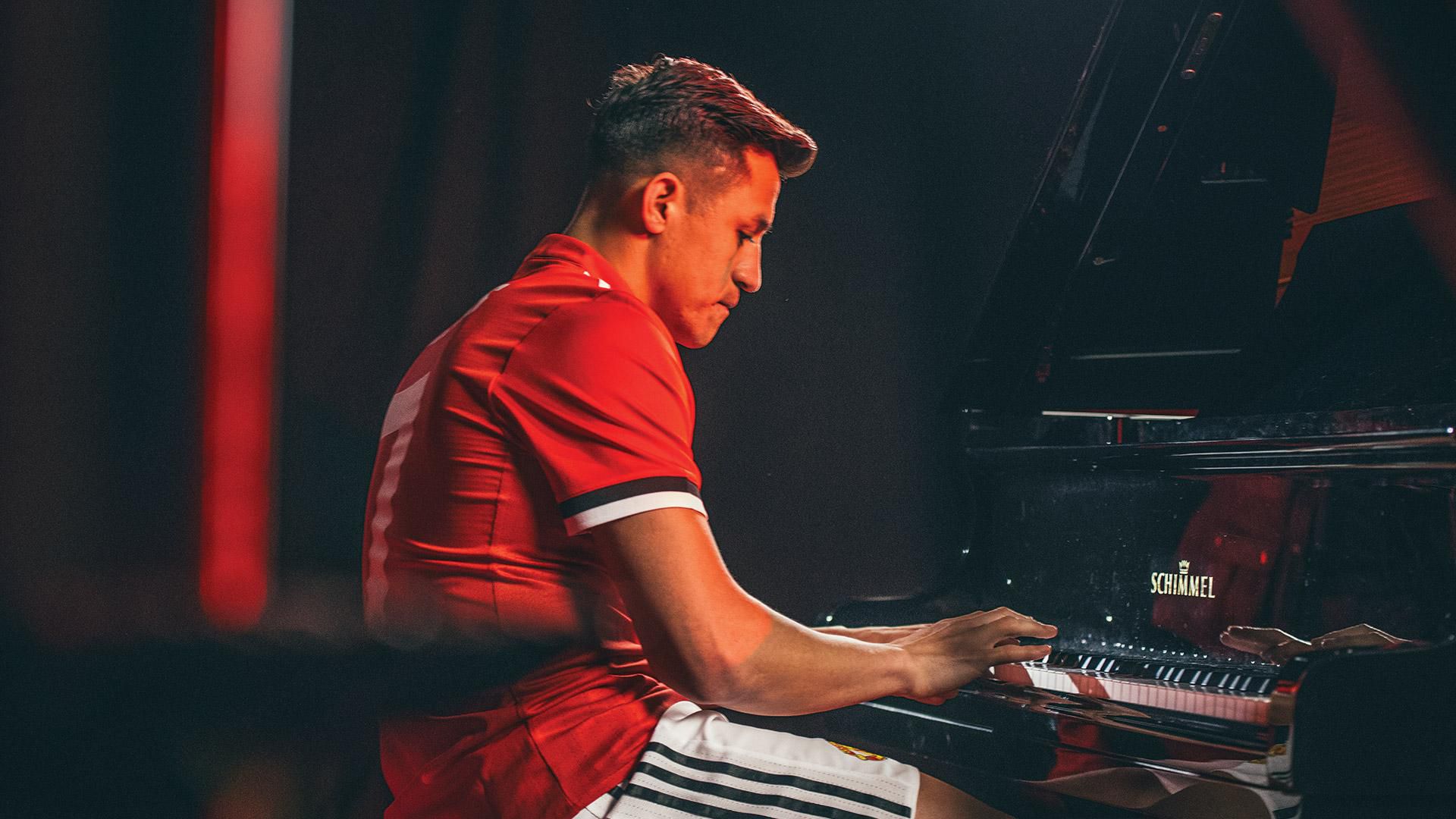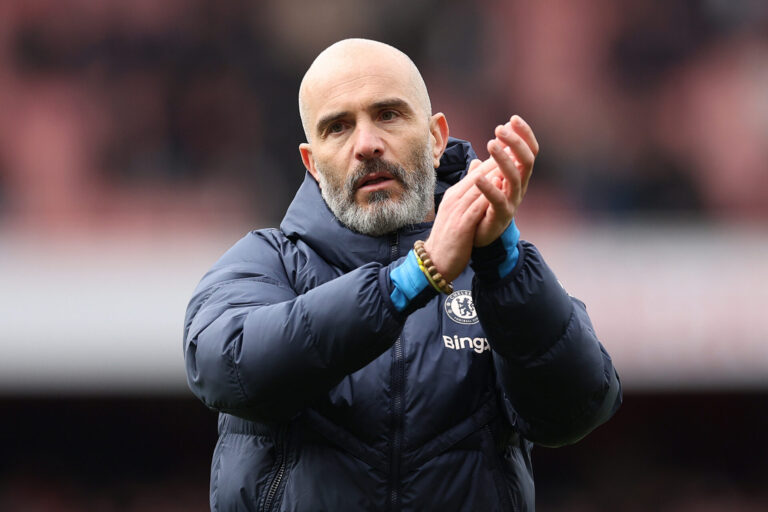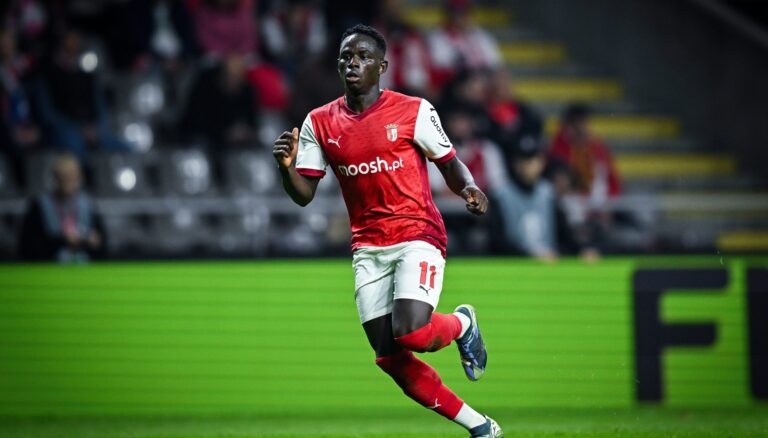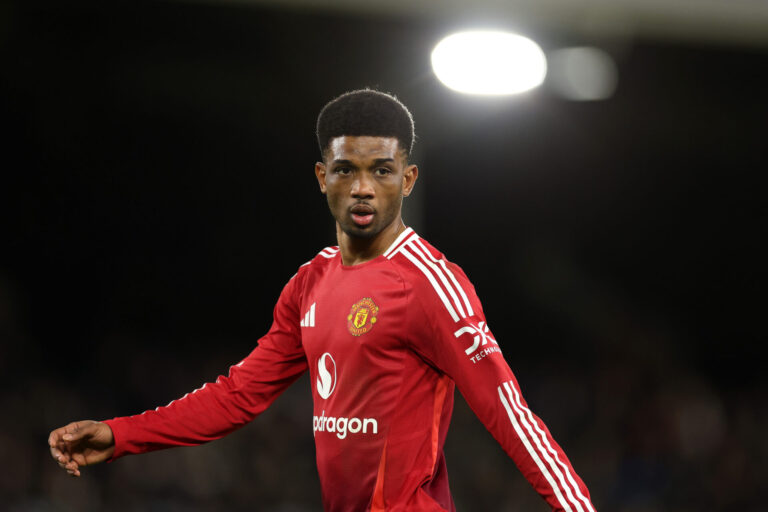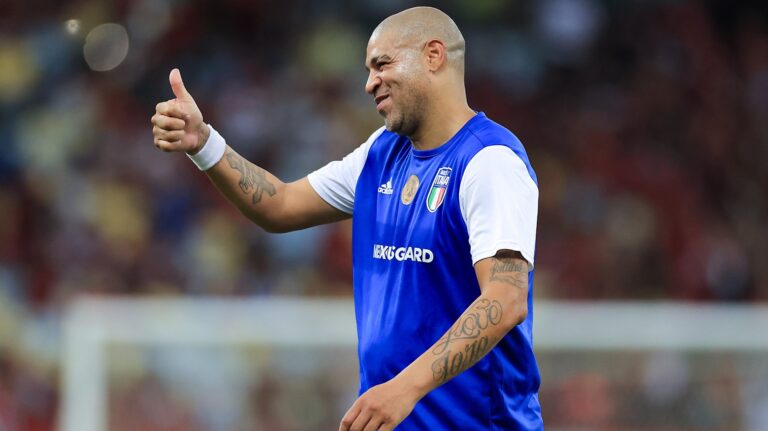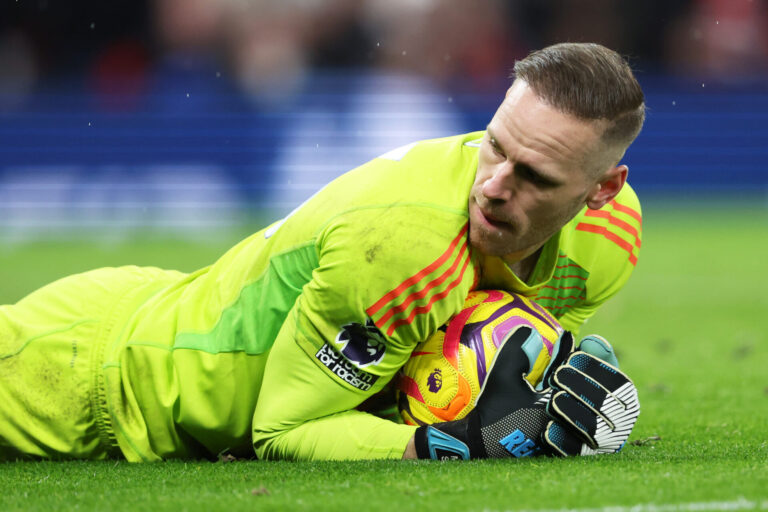The 50 Worst January Signings in Premier League History
The January transfer window has always been viewed as a gamble for Premier League clubs, and these gambles can lead to some of the worst January Signings ever made. Midway through a demanding season, it’s often a seller’s market, with reluctant clubs holding out for inflated fees while desperate buyers try to plug gaps in underperforming squads. Unlike the summer, where transfers can be planned meticulously, January deals tend to be reactionary—clubs scrambling to save their seasons or cover unexpected injury crises. The result? A mix of rushed signings, overpriced deals, and players struggling to adapt, leading to a history of costly errors.
The current transfer window system was introduced in the 2002/03 season as part of a broader agreement between FIFA and the European Commission to stabilise the football market. Prior to this, transfers could occur throughout the season, often disrupting squads and creating instability. The introduction of two specific windows—the summer and winter periods—was designed to protect contractual integrity and encourage long-term squad planning. However, the January window’s timing has always made it a breeding ground for risky, reactionary business.
In this article, we’ll revisit 50 of the worst January signings in Premier League history—deals that promised much but delivered little, proving that not all mid-season gambles pay off.
The Worst January Signings in Premier League History.
50. Dean Ashton – Norwich City to West Ham United (£7m, 2006)
In January 2006, West Ham United signed Dean Ashton from Norwich City for £7 million, a then-club record fee. Ashton had impressed in the Premier League despite Norwich’s relegation the previous season, and the Hammers were confident they had secured a top-class striker who could lead their attack for years to come.
Ashton initially lived up to expectations, scoring crucial goals, including one in the FA Cup semi-final that helped West Ham reach the final in 2006. However, his career was tragically cut short by persistent injuries. After suffering a serious ankle injury while training with England later that year, he struggled to regain full fitness and eventually retired in 2009 at the age of 26. While Ashton showed flashes of brilliance when fit, the £7 million investment ultimately didn’t yield long-term rewards due to his unfortunate injury problems, making his transfer a case of unfulfilled potential.
49. Georgios Samaras – Heerenveen to Manchester City (£6m, 2006)
In January 2006, Manchester City signed Greek striker Georgios Samaras from Heerenveen for £6 million, a significant fee at the time for a player with potential but little experience at the top level. City, under manager Stuart Pearce, hoped Samaras could provide a spark in attack as they aimed to climb the Premier League table.
Samaras, however, struggled to adapt to the physical nature of English football. Over two seasons, he managed just 8 goals in 55 league appearances, often appearing out of confidence and lacking sharpness in front of goal. By the summer of 2008, he was sold to Celtic, where he found greater success. While he went on to enjoy a decent career in Scotland, his time at Manchester City was forgettable, and the transfer remains one of their less successful January moves.
48. Marlon King – Watford to Wigan Athletic (£4m, 2008)
In January 2008, Wigan Athletic signed Marlon King from Watford for £4 million, hoping the striker would bring goals and help them in their fight against relegation. King had enjoyed a prolific spell in the Championship with Watford, and Wigan believed he could translate that form to the Premier League under manager Steve Bruce.
However, King’s time at Wigan was marred by poor performances and off-field controversies. He managed just one goal in 18 league appearances before being loaned out to Hull City the following season. Eventually, Wigan terminated his contract in 2009 after he was convicted of assault, making this transfer one of the club’s worst both on and off the pitch. Despite arriving with some pedigree, King’s brief and disappointing spell left little positive impact at Wigan.
47. Nery Castillo – Shakhtar Donetsk to Manchester City (Loan, 2008)
In January 2008, Manchester City signed Mexican forward Nery Castillo on a year-long loan from Shakhtar Donetsk, paying a hefty £3 million loan fee. Castillo had only moved to Shakhtar from Olympiakos, but had failed to shine during his initial spell at the club. So much had he hated his time Ukraine, that he made a significant financial contribution in order to complete this move by paying most of the loan fee himself. Castillo had been highly regarded after an impressive stint with Olympiacos and strong performances for Mexico at the 2007 Copa América. City, then under Sven-Göran Eriksson, hoped he could add flair and firepower to their attack.
“Nery Castillo’s desire to make this deal happen has been extraordinary. He has made a significant financial contribution in order to complete this move by paying most of the loan fee himself. This proves how much he wants to play for Manchester City in the Premier League.”
However, Castillo’s time at City was a disaster. He struggled to adapt to English football and suffered a broken shoulder just weeks after joining, which kept him sidelined for months. When he did play, he failed to make an impact, managing only nine league appearances without scoring a goal. By the end of the loan spell, City chose not to pursue a permanent deal. Despite arriving with significant promise, Castillo’s brief stint is remembered as one of Manchester City’s worst January moves. I think I remember his eyebrow more than his ability.
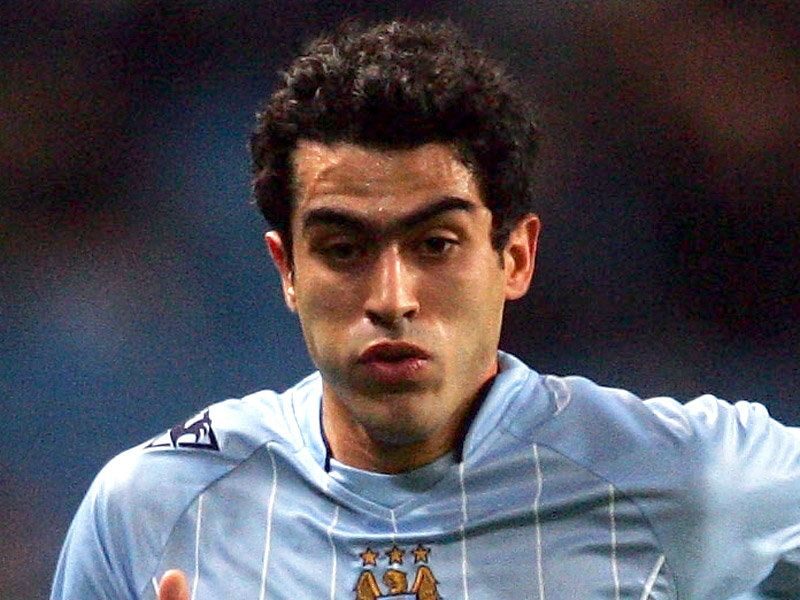
46. Alberto Paloschi – Chievo to Swansea City (£8m, 2016)
In January 2016, Swansea City signed Alberto Paloschi from Chievo for £8 million, hoping the Italian striker could provide the goals needed to steer the club away from relegation. Paloschi had built a respectable reputation in Serie A, and Swansea believed his partnership with Francesco Guidolin—who had managed him at Parma—would help him hit the ground running in the Premier League.
Despite starting regularly, Paloschi managed just two goals in 10 league appearances. Swansea narrowly avoided relegation, but Paloschi’s lack of impact prompted the club to part ways with him after just half a season. He was sold to Atalanta in the summer of 2016. The brief and underwhelming spell at Swansea made Paloschi’s signing a forgettable January gamble that didn’t pay off.
45. Oumar Niasse – Lokomotiv Moscow to Everton (£13.5m, 2016)
In January 2016, Everton signed Oumar Niasse from Lokomotiv Moscow for £13.5 million, with hopes that the Senegalese striker could provide a much-needed goal threat. Niasse had been in fine form in Russia, scoring 12 goals in 21 appearances during the first half of the season, and Everton manager Roberto Martínez believed he could make an immediate impact in the Premier League.
However, things quickly went south. Niasse struggled to adapt to the English game, and after Martínez was sacked, new manager Ronald Koeman made it clear that the striker was not part of his plans. Niasse was even denied a squad number at one point. Despite brief spells of resurgence during his time at Goodison Park, he managed just eight goals in 31 league appearances across four years. His hefty price tag and lack of consistency made him one of Everton’s worst January signings.
44. Alexandre Pato – Corinthians to Chelsea (Loan, 2016)
In January 2016, Chelsea signed former AC Milan star Alexandre Pato on loan from Corinthians. Once considered one of the brightest young talents in world football, Pato’s career had been derailed by persistent injuries and inconsistent form. The move was seen as a gamble by Chelsea, with hopes that the Brazilian striker could rediscover his best form and provide competition for Diego Costa and Loïc Rémy.
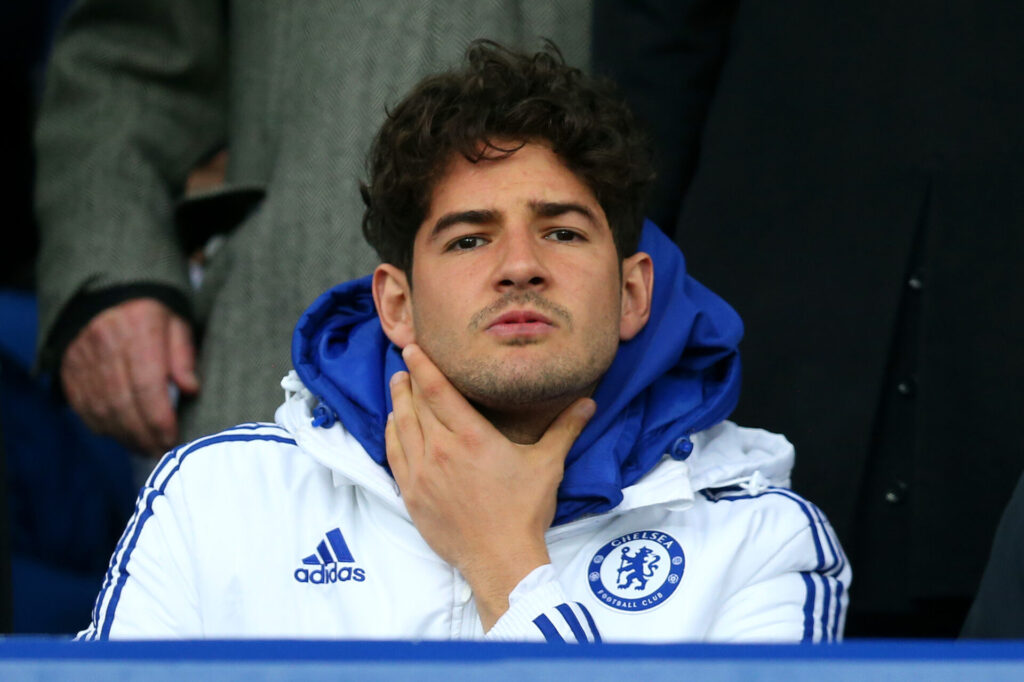
Unfortunately, Pato’s time at Chelsea turned out to be a disaster. He arrived lacking match fitness and didn’t make his debut until April, three months after signing. He scored a penalty in a 4-0 win against Aston Villa but failed to make any further impact, playing just one more game before returning to Brazil. Despite costing little in terms of transfer fees, the move achieved almost nothing, and Pato’s brief stint is remembered as one of Chelsea’s worst January deals.
43. Callum McManaman – Wigan Athletic to West Bromwich Albion (£4.75m, 2015)
West Bromwich Albion signed Callum McManaman from Wigan Athletic for £4.75 million in January 2015, hoping the winger’s pace and trickery would bolster their attack. McManaman had gained national attention for his impressive performances during Wigan’s 2013 FA Cup-winning campaign, and West Brom believed he could replicate that form in the Premier League.
However, McManaman’s time at The Hawthorns was disappointing. He struggled to adapt to West Brom’s style of play and found himself on the fringes of the squad, making just 20 league appearances without scoring a goal. After two unremarkable years, he was loaned out and later sold to Sunderland. For a player signed with high expectations, McManaman’s lack of impact made this a forgettable and costly signing for the Baggies.
42. Jordon Mutch – QPR to Crystal Palace (£4.75m, 2015)
In January 2015, Crystal Palace signed Jordon Mutch from Queens Park Rangers for £4.75 million, hoping the versatile midfielder would add creativity and energy to their midfield. Mutch had shown flashes of promise at Cardiff City and QPR, and Palace believed they were getting a player entering his prime.
However, Mutch’s time at Selhurst Park was underwhelming. He struggled to secure a regular starting spot and failed to make any notable impact during his three-and-a-half years at the club. Mutch made 31 league appearances without scoring a goal before being loaned out and eventually released in 2019. Despite his promising reputation, Mutch’s stint at Palace became yet another example of a mid-season signing that failed to deliver.
41. Massadio Haïdara – Nancy to Newcastle United (£2m, 2013)
Massadio Haïdara joined Newcastle United from Nancy for £2 million in January 2013 as part of the club’s effort to strengthen their squad with young French talent. Haïdara, a promising left-back, was seen as a long-term investment who could provide competition for the first-team spot and eventually develop into a key player.
Unfortunately, Haïdara’s time at Newcastle was marred by injuries. He struggled to stay fit and never managed a consistent run of games. One of the most memorable moments of his Newcastle career came when he suffered a horrific tackle from Callum McManaman during a match against Wigan, which sidelined him for months. Over five seasons, Haïdara made just 53 appearances before leaving for Ligue 2 side Lens in 2018. Despite initial hopes, his injury-hit spell means he is remembered as another January signing that never quite worked out for Newcastle.
40. Wilfried Zaha – Crystal Palace to Manchester United (£15m, 2013)
Wilfried Zaha’s £15 million move from Crystal Palace to Manchester United in January 2013 was viewed as a statement signing. At just 20 years old, Zaha was one of the most exciting young talents in English football, helping Palace earn promotion to the Premier League. He was Sir Alex Ferguson’s final signing before retiring, which added to the pressure and expectations surrounding the deal. However, Zaha’s dream move quickly turned into a nightmare.
After Ferguson’s departure, Zaha struggled to earn the trust of new manager David Moyes. There were even rumours that Zaha had been associating with Moyes’ daughter, which the player eventually had to deny. Mad.
He made only four competitive appearances for United and was loaned back to Crystal Palace, where he eventually returned permanently in 2015. While Zaha went on to become a club legend at Palace, his time at United is remembered as a disappointment, with many believing he wasn’t given a fair chance to prove himself.
39. Manucho – Petro Atlético to Manchester United (Undisclosed, 2008)
In January 2008, Manchester United made a surprise move by signing Angolan striker Manucho from Petro Atlético. The transfer was unexpected, as Manucho was relatively unknown outside of Angola, but United manager Sir Alex Ferguson believed the forward had potential. Following a trial period, the club decided to offer him a contract. However, due to work permit issues, Manucho was immediately loaned out to Greek side Panathinaikos.
“We have had Manucho here for a three-week trial and have been impressed enough to offer him a contract,” said boss Sir Alex Ferguson. “He is a tall, agile, quick forward and through contacts that Carlos (Queiroz) has, was brought to our attention around six months ago.”
When he eventually returned to Old Trafford, Manucho struggled to break into a team filled with world-class attacking talent. He made just three appearances for United, all as a substitute, before being loaned to Hull City and later sold to Real Valladolid in 2009. Despite arriving with some fanfare, Manucho’s time at United was short-lived, and he’s remembered as one of the more obscure signings of the Ferguson era.
38. Karlan Grant – Huddersfield Town to West Bromwich Albion (£15m, 2020)
West Bromwich Albion signed Karlan Grant from Huddersfield Town in October 2020 for £15 million, hoping the striker would provide the firepower needed to avoid relegation from the Premier League. Grant had been a prolific scorer in the Championship, netting 19 goals for Huddersfield in the previous season, and West Brom believed he could replicate that form in the top flight.
Unfortunately, Grant struggled to adapt to the Premier League. He managed just one goal in 21 appearances during West Brom’s relegation campaign, often appearing isolated and out of confidence in an underperforming side. While he later found better form in the Championship, his lack of impact in the Premier League made this an expensive and disappointing signing for the Baggies.
37. Jean Makoun – Lyon to Aston Villa (£6.2m, 2011)
In January 2011, Aston Villa were struggling in the league, and manager Gérard Houllier turned to one of his former players, Jean Makoun, to strengthen their midfield. Makoun had enjoyed a decent career in Ligue 1 with Lille and Lyon, and Villa believed they were getting an experienced, box-to-box midfielder who could provide stability.
Makoun’s time in Birmingham was short and forgettable. He played just seven league games before being sent off in a crucial match against Blackpool, effectively ending his chances of establishing himself. By the following season, he had been loaned out to Olympiacos, and Villa eventually cut ties with him. Given the fee and his lack of impact, Makoun remains one of Villa’s worst-ever January signings.
36. Giovani Lo Celso – Real Betis to Tottenham Hotspur (£27m, 2020)
Giovani Lo Celso initially joined Tottenham Hotspur on loan from Real Betis in the summer of 2019, but after showing flashes of potential during the first half of the season, Spurs made the move permanent in January 2020 for £27 million. Seen as a versatile attacking midfielder with creativity and flair, Lo Celso was expected to fill the void left by Christian Eriksen’s departure. Spurs fans hoped he would become a key figure under manager José Mourinho.
Despite occasional glimpses of his talent, Lo Celso struggled with consistency and fitness throughout his time in North London. Injuries disrupted his momentum, limiting him to just 55 Premier League appearances over three seasons, during which he contributed only one goal. By 2022, he was deemed surplus to requirements and loaned out to Villarreal. For a player signed with such high expectations, Lo Celso’s time at Spurs remains a costly disappointment.
35. Mbwana Ally Samatta – Genk to Aston Villa (£8.5m, 2020)
In January 2020, Aston Villa signed Mbwana Ally Samatta from Genk for £8.5 million, hoping the Tanzanian striker would solve their goal-scoring issues following an injury to key forward Wesley. Samatta arrived with a solid reputation after scoring 10 goals in the Belgian Pro League that season and becoming the first Tanzanian to play in the Premier League. Expectations were high that he could be a reliable presence up front for Villa as they battled to avoid relegation.
“It was painful, but I had to make the choice. And then came Fenerbahce. A top team, with top fans. Known all over the world.”
Samatta’s start was promising, scoring on his Premier League debut against Bournemouth and later finding the net in the League Cup final against Manchester City. However, he failed to maintain that form, finishing the season with just one league goal in 14 appearances. With Villa narrowly avoiding relegation, the club quickly moved to strengthen their attack in the summer, signing Ollie Watkins. Samatta was loaned out to Fenerbahçe and later sold, marking a disappointing end to a brief and costly stint at Villa Park.
34. Danny Ings – Aston Villa to West Ham (£15m, 2023)
Danny Ings’ move from Aston Villa to West Ham in January 2023 for £15 million was aimed at addressing the Hammers’ goal-scoring woes. Known for his clinical finishing and Premier League experience, Ings was expected to provide an immediate impact in front of goal as West Ham battled to stay clear of relegation. With Michail Antonio struggling for form and Gianluca Scamacca dealing with injuries, Ings seemed like the perfect solution.
However, despite his proven track record, Ings failed to make a significant impact at the London Stadium. He struggled to adapt to David Moyes’ counter-attacking system, which didn’t suit his style of play. Ings managed just three goals in his first 17 appearances and often found himself starting from the bench. While it’s too early to completely write off his time at West Ham, his high fee and lack of influence thus far have made this deal look like a poor piece of mid-season business.
33. Kim Källström – Spartak Moscow to Arsenal (Loan, 2014)
Few January signings have baffled fans more than Arsenal’s loan move for Kim Källström in 2014. The Swedish midfielder arrived with a broken back, meaning he couldn’t play for the first few weeks of his loan spell. Arsenal were in the midst of an injury crisis and fighting for a top-four finish, so the decision to sign an injured player puzzled many.
When Källström eventually made his debut, he managed just four league appearances, contributing little to Arsenal’s campaign. While his overall play wasn’t terrible, the circumstances surrounding his arrival and lack of impact made it one of the more pointless January transfers in Premier League history. Fans still joke about how Arsenal signed a player who was literally injured upon arrival.
32. Mislav Oršić – Dinamo Zagreb to Southampton (£8m, 2023)
In January 2023, Southampton signed Croatian winger Mislav Oršić from Dinamo Zagreb for £8 million, hoping his experience and goal-scoring pedigree would help them avoid relegation. Known for his memorable performances in Europe, including a famous hat-trick against Tottenham, Oršić was seen as a low-risk, high-reward signing. With Southampton struggling to score, he was expected to provide an immediate boost to their attacking options.
However, Oršić barely featured, making just one brief league appearance before being sidelined by both injuries and managerial decisions. He failed to adapt to the Premier League’s demands, and by the end of the season, he was loaned out to Trabzonspor after Southampton’s relegation. Despite arriving with plenty of promise, Oršić’s time at St Mary’s was over almost as soon as it began, making him one of their most disappointing January signings. Oršić is one of those weird signings where if you saw him play before the move, you’d have almost questioned why he had still been playing in Croatia. Maybe this was why?
31. Morgan Sanson – Marseille to Aston Villa (£14m, 2021)
Aston Villa’s £14 million signing of Morgan Sanson from Marseille in January 2021 was meant to be a smart piece of business. The French midfielder arrived with a solid reputation from Ligue 1, where he had helped Marseille qualify for the Champions League. Villa hoped he would add technical quality and depth to a midfield already featuring John McGinn, Douglas Luiz, and Jacob Ramsey.
However, Sanson’s time in the Premier League turned out to be underwhelming. He struggled to adapt to the physical demands of English football and was plagued by recurring injuries, limiting his game time. Over two-and-a-half seasons, Sanson made just 20 league appearances, contributing only one assist and no goals. His lack of rhythm and match sharpness meant he never had a consistent run in the starting XI, and he quickly fell down the pecking order.
By 2023, it was clear that the move had not worked out. Sanson was loaned out to Strasbourg, with Villa looking to offload him permanently. Given the significant transfer fee and wages involved, Sanson’s spell at Villa Park stands as a reminder of how tricky January signings can be, even when they involve players with proven pedigree. He eventually did leave last summer for a massive loss to INEOS’ Nice.
30. Philippe Coutinho – Barcelona to Aston Villa (Loan, 2022, £17m permanent fee, 2023)
When Philippe Coutinho joined Aston Villa on loan from Barcelona in January 2022, it was seen as a coup for the Midlands club. The Brazilian playmaker had enjoyed a stellar career at Liverpool before his high-profile £142 million move to Barcelona in 2018, and Villa fans hoped he could rediscover his magic under former teammate Steven Gerrard, who was now managing the side.
Coutinho’s Villa career started brightly. He scored and assisted on his debut in a thrilling 2-2 draw against Manchester United, sparking optimism that he could help lift Villa into the top half of the table. A few more impressive performances followed, and Villa opted to make his move permanent in the summer of 2023 for a reported £17 million.
However, that early promise quickly faded. Coutinho’s form dipped significantly, and he began to struggle with injuries. Despite his undoubted technical ability, he failed to influence games regularly, and his lack of pace and defensive contribution became a liability in a Villa side that needed more physicality and energy. By the start of the 2023/24 season, he had fallen out of favour under new manager Unai Emery and was loaned out to Qatari side Al-Duhail. He has since been loaned back to Brazil and Villa hope he will stay there permanently, as he still has a contract until 2026.
29. Juan Cuadrado – Fiorentina to Chelsea (£23.3m, 2015)
Chelsea fans were excited when the club signed Juan Cuadrado for £23.3 million in February 2015. The Colombian winger had been a standout performer in Serie A and had impressed at the 2014 World Cup. However, Cuadrado never settled in London and struggled to adapt to the Premier League’s physicality.
“What went wrong? The truth is, I don’t know,” he said. “I was always professional and I always trained very well. I didn’t play as much as I wanted, but I was always ready.”
He made just 13 league appearances before being loaned out to Juventus, where he later moved permanently. Given the hype surrounding his arrival and the sizeable transfer fee, Cuadrado’s short and forgettable stint at Chelsea ranks among the club’s worst January deals.
28. Denis Suárez – Barcelona to Arsenal (Loan, 2019)
In January 2019, Arsenal were in desperate need of midfield reinforcements, and manager Unai Emery turned to a familiar face—Denis Suárez, whom he had worked with during his time at Sevilla. The Barcelona loanee arrived with expectations of adding creativity and flair to Arsenal’s midfield.
Unfortunately, Suárez’s spell at Arsenal was a complete failure. He struggled with fitness issues and failed to adapt to the physicality of English football. He made just six appearances, most of them from the bench, and didn’t register a single goal or assist. By the end of the season, he returned to Barcelona, with Emery admitting that the loan move hadn’t worked out. Suárez’s stint is now remembered as a waste of resources, with Arsenal essentially gaining nothing from the deal.
27. Lewis Grabban – Reading to Bournemouth (£7m, 2016)
Lewis Grabban had enjoyed a successful spell with Bournemouth earlier in his career, so his return to the club in January 2016 seemed like a sensible move. The Cherries paid £7 million to bring him back, hoping he could provide competition for Callum Wilson.
However, Grabban failed to make an impact during his second stint, failing to score in any of his 18 league appearances. He was loaned out the following season and eventually sold. His return turned out to be a waste of resources, with Bournemouth failing to get any return on their investment.
26. Dele Alli – Tottenham to Everton (Free, 2022)
Dele Alli’s move to Everton in January 2022 was viewed as a chance for the once highly-rated midfielder to revive his career after falling out of favour at Tottenham. Initially arriving on a free transfer with performance-related add-ons, the deal carried low financial risk but high expectations.
However, Alli’s struggles continued at Everton. He looked off the pace in his limited appearances, and his work rate was often questioned. After just 13 games without a goal or assist, he was sent on loan to Besiktas. Once regarded as one of England’s brightest prospects, his Everton stint only reinforced how far his stock had fallen. He has since left Everton and gone on trial in Como. What a beautiful place to spend the swansong of your career in.
“Unfortunately, things haven’t worked out as we all would have hoped and I think it’s the right time for me to turn a new page. I want to wish everyone at this amazing club the very best of luck and hopefully we will see each other again soon.”
25. Paul Onuachu – Genk to Southampton (£18m, 2023)
In January 2023, Southampton were in a relegation scrap and turned to Paul Onuachu, a towering striker who had been prolific for Genk in Belgium. The £18 million signing was seen as a bold move to add much-needed firepower to the Saints’ attack.
Unfortunately, Onuachu struggled to adapt to the Premier League’s speed and physicality. He failed to score in his first eight appearances, and Southampton continued to struggle in front of goal. He was sent out on loan to Trabzonspor when Southampton were in the Championship, scored 15 goals in 21 games, and then came back and stunk it up in the Premier League. While there’s still time for him to turn things around, his early form has done little to justify the significant outlay. He looks like one of those players who can be a big fish in a small pond, but can’t compete at the top level.
24. Jonjo Shelvey – Newcastle to Nottingham Forest (£2m, 2023)
Jonjo Shelvey’s January 2023 move to Nottingham Forest was intended to add experience and creativity to a newly promoted side fighting to stay up. Forest, who had signed an extraordinary number of players since their promotion, hoped Shelvey’s Premier League pedigree would give them an edge.
Instead, the midfielder’s performances were underwhelming. Shelvey looked slow and struggled to influence games in the way Forest had hoped. By the end of the season, he had fallen out of favour and was linked with an early exit, making the move seem like another questionable piece of business by the club. Shelvey eventually moved on to Turkey. His time in Turkey appears to have been a mixed experience. He initially joined Rizespor on loan, where he made headlines for scoring a remarkable goal from his own half. He had some positive moments on the pitch in Turkish football. However, his most recent stint with Eyüpspor ended in early January 2025 when he left the club by mutual consent.
It is mad to think that Jonjo Shelvey is only 32, with his last England cap coming in 2015. He is reportedly on trial with Burnley, indicating he may be considering a return to English football.
23. Fousseni Diabaté – Ajaccio to Leicester City (£2m, 2018)
Leicester City brought in Fousseni Diabaté from Ajaccio in January 2018 for a modest £2 million, hoping the Malian winger would develop into a long-term asset. He made an immediate impact, scoring twice in an FA Cup match against Peterborough United, but that proved to be a false dawn. Leicester had hoped to replicate what they had done with Riyad Mahrez, by signing a young prospect from Ligue 2 with technical ability and pace, but Mahrez was a unicorn and Diabaté was not.
Diabaté’s form faded quickly, and he managed just 15 league appearances without scoring. By 2019, he was sent out on loan, and Leicester eventually sold him for a small fee. While the financial cost wasn’t high, the signing did little to help Leicester, and Diabaté was soon forgotten.
22. Ben Davies – Preston to Liverpool (£1.6m, 2021)
In January 2021, Liverpool were in the midst of a defensive crisis, with Virgil van Dijk, Joe Gomez, and Joel Matip all sidelined by long-term injuries. To cope, they signed Ben Davies from Preston for £1.6 million. Despite arriving with little fanfare, there was hope he could provide short-term cover.
However, Davies never played a competitive match for Liverpool. He remained on the bench throughout the second half of the season and was loaned out the following year. While the financial loss was minimal, the move was ultimately pointless, with Davies failing to make any impact before being sold. It was just so utterly pointless, and I’m sure Ben Davies got paid well for it, but even he should have been scratching his head.
21. Benni McCarthy – Blackburn to West Ham (£2.25m, 2010)
Benni McCarthy had been a consistent goal scorer for Blackburn Rovers, so when West Ham signed him for £2.25 million in January 2010, they believed they were getting a proven Premier League striker. Instead, McCarthy arrived unfit, and his condition only worsened during his time in East London. He failed to score in 14 league appearances and was released after just one season. McCarthy’s brief stint at West Ham was marred by poor fitness and a lack of impact, making this a low-cost but high-profile January flop.
The most memorable part of Benni McCarthy’s spell at the club was his relationship with the club’s leadership. He infamously referred to West Ham vice-chairman Karren Brady as “the devil with tits,” a statement he later stood by.
“West Ham are flying and Karen is part of that, so who am I to knock them? But she started throwing blows at me and I can step into the ring with anyone. I wasn’t going to stand there as she spanked me in public, so I hit back. Do I stand by what I said? Yes, I do.”
20. Michael Ricketts – Bolton to Middlesbrough (£3.5m, 2003)
By January 2003, Michael Ricketts was being tipped as one of England’s rising strikers. The previous year, he had scored 15 league goals for Bolton Wanderers, earning himself an international call-up under Sven-Göran Eriksson. Middlesbrough, searching for a reliable goal scorer, saw Ricketts as a bargain at £3.5 million. However, it quickly became clear that his form at Bolton had been a one-off.
Ricketts failed to score in his first half-season at Boro and was woefully out of shape by the start of the next campaign. He became a peripheral figure before eventually being offloaded. Middlesbrough’s hopes of landing a striker who could fire them into Europe fell flat, and Ricketts’ rapid decline remains one of the Premier League’s more puzzling transfer flops.
19. Jordan Hugill – Preston to West Ham (£10m, 2018)
Another West Ham attacker? Colour me shocked. West Ham’s £10 million move for Jordan Hugill in January 2018 felt like a panic buy. With injuries to key attackers and David Moyes scrambling for reinforcements, Hugill was plucked from Preston North End, where he had built a reputation as a powerful, no-nonsense forward. While he had done well in the Championship, it was unclear whether he could make the step up to Premier League level.
“I have no regrets at all. Going from Preston to West Ham is something I could never have dreamed of in my whole life. I’d do it over and over again, regardless of what happens.”
The answer became evident soon enough—he couldn’t. Hugill made just three substitute appearances for West Ham without scoring. Despite his obvious effort on the pitch, he looked out of his depth against Premier League defences. He was loaned out the following season and sold to Queens Park Rangers in 2020, having never scored a goal for the Hammers. In hindsight, Hugill’s transfer is viewed as a classic example of a top-flight club overspending on an unproven player during the January window.
18. Danny Graham – Swansea to Sunderland (£5m, 2013)
At Swansea City, Danny Graham had been an effective target man under Brendan Rodgers and later Michael Laudrup, netting 21 league goals across two seasons. Sunderland, battling relegation in 2013, paid £5 million to bring Graham back to the north-east, hoping he would provide the goals needed to keep them up.
Instead, Graham’s move turned into a nightmare. He failed to find the net in 13 appearances during the second half of the season, and Sunderland narrowly avoided relegation despite his struggles. Graham’s goal drought continued into the following campaign, and he was soon shipped out on loan. By the time he left the club permanently, his spell at Sunderland was remembered more for missed chances than anything else. It was a signing that promised much but delivered very little.
“The Sunderland spell was really tough. [I had] some of the lowest points of my career.”
17. Badou Ndiaye – Galatasaray to Stoke (£14m, 2018)
Stoke City’s situation in January 2018 was dire. Sitting in the relegation zone, they were in desperate need of reinforcements, particularly in midfield. They turned to Badou Ndiaye, a Senegalese international who had impressed during his time at Galatasaray. The £14 million fee was significant for a club of Stoke’s size, but the hope was that Ndiaye’s dynamism would give them a fighting chance of survival.
To Ndiaye’s credit, he was one of Stoke’s better performers during that period, but it wasn’t enough. Stoke were relegated, and Ndiaye left for Galatasaray after just six months. While Ndiaye’s individual performances weren’t disastrous, the transfer ultimately failed in its primary objective: keeping Stoke in the Premier League. Given the fee and the club’s fate, the move is now viewed as a costly miscalculation.
16. Steven Naismith – Everton to Norwich (£8.5m, 2016)
Steven Naismith was the kind of player who rarely made headlines but always contributed. At Everton, he had built a reputation as a versatile forward who could score important goals—he famously netted a hat-trick against Chelsea in 2015. When Norwich City paid £8.5 million to bring him in during their fight for survival, many thought it was a smart piece of business.
“He is, I think, in the same bracket as Ricky Van Wolfswinkel as one of Norwich City’s two greatest transfer follies of the last ten years, maybe even of all-time.”
However, Naismith’s time at Carrow Road was underwhelming. He scored on his debut in a thrilling 5-4 loss to Liverpool but managed just one more goal in his next 12 appearances. Norwich were relegated, and Naismith struggled to make an impact in the Championship. Though he remained with the club for a couple of seasons, his hefty transfer fee and limited output made this a disappointing signing for the Canaries.
15. Jürgen Locadia – PSV Eindhoven to Brighton (£14.1m, 2018)
Brighton broke their transfer record in January 2018 to sign Jürgen Locadia, a powerful forward who had scored consistently for PSV Eindhoven in the Eredivisie. The Seagulls, in their first Premier League season, were desperate to add firepower to their attack to ensure survival. On paper, Locadia seemed like a good fit—strong, quick, and capable of playing across the front line.
“I never had a real clear explanation as to why I do not play. The manager will find the other strikers better. I must, of course, respect that. But it is also my career, I cannot keep saying ‘yes and amen’.”
However, things didn’t go according to plan. Locadia scored just six goals in 43 league appearances across three seasons. He struggled with the pace and physicality of the Premier League and often looked like a player lacking confidence. By 2020, Brighton loaned him out to Hoffenheim, and he eventually left permanently for free. Given the high fee and lack of return, this remains one of Brighton’s worst January deals.
14. Chris Samba – Anzhi Makhachkala to QPR (£12.5m, 2013)
QPR were in chaos during the 2012/13 season, with manager Harry Redknapp facing the daunting task of saving a club that had spent heavily but remained rooted to the bottom of the table. In a bid to shore up the defence, they signed Chris Samba from Russian side Anzhi Makhachkala for a whopping £12.5 million. The club handed him a £100,000-a-week contract, too. Samba, a former Blackburn Rovers star, was seen as the kind of no-nonsense defender who could add steel to QPR’s backline.
“”At QPR he will earn almost as much as he did at Anzhi. In my view QPR have lost their minds. When they agreed to pay his release fee we wept. He [Samba] wept. Everybody says that he ran away from the club, but that’s not true. He didn’t put any pressure on the club until we received an offer from QPR for £12.5m, the amount required by his contract.”
Anzhi director German Tkachenko
Despite his reputation, Samba struggled for fitness and form, and his performances fell well short of expectations. He looked off the pace, and QPR’s defensive frailties continued. The club was relegated, and Samba returned to Anzhi after just six months. His brief stint remains symbolic of QPR’s reckless spending during that era.
13. Theo Walcott – Arsenal to Everton (£20m, 2018)
In January 2018, Everton signed Theo Walcott from Arsenal for £20 million (with it potentially increasing to more), hoping the experienced winger could bring pace, creativity, and goals to their attack. Walcott, who had been at Arsenal for over a decade, arrived at Goodison Park with a strong pedigree, including 108 goals for the Gunners and 47 England caps. For Everton, struggling to find consistency under Sam Allardyce, Walcott was expected to make an immediate impact.
Walcott started brightly, scoring twice in his first four league appearances, but his form soon tailed off. Over two-and-a-half seasons, he managed just 10 goals in 85 appearances, struggling to deliver the consistent quality Everton had hoped for. With his contract also being massive, and expectations being the ceiling, in the end Everton were glad to be rid of him. By 2020, he was loaned back to Southampton and later left permanently. While not a complete failure, the significant transfer fee and his limited impact make Walcott’s Everton spell a disappointing chapter in an otherwise respectable career.
12. Jean-Alain Boumsong – Rangers to Newcastle (£8m, 2005)
Back in January 2005, Newcastle United were on the hunt for a commanding centre-back. They turned to Jean-Alain Boumsong, who had been performing well for Rangers in the Scottish Premier League. However, the £8 million fee raised eyebrows, given that Boumsong had joined Rangers on a free transfer just six months earlier.
Boumsong’s time at Newcastle was disastrous. Despite his physical attributes, he was prone to errors and struggled to deal with Premier League attackers. His performances drew widespread criticism, and he quickly became a scapegoat for Newcastle’s defensive woes. Boumsong lasted just 18 months before being sold to Juventus for a fraction of the price. The deal highlighted Newcastle’s poor recruitment strategy at the time, with Boumsong becoming one of their most infamous signings.
11. Kostas Mitroglou – Olympiakos to Fulham (£12m, 2014)
Fulham’s signing of Kostas Mitroglou in January 2014 was a desperate attempt to avoid relegation. The £12 million fee was a club record, and Mitroglou arrived with a reputation as a prolific goal scorer in Greece. Unfortunately, he barely featured for the club due to fitness issues and managed just three league appearances.
“This fucker, he did not stop eating. He was a big boy. And you know the protein bars, every time you’d see him, he’d be walking around the training ground with a fucking protein bar.”
Steve Sidwell, former Fulham player, on Mitroglou’s fitness issues
Fulham were relegated, and Mitroglou was loaned out the following season before leaving permanently. The deal epitomised Fulham’s struggles during that period, and Mitroglou’s name remains synonymous with failed Premier League transfers.
10. Saido Berahino – West Brom to Stoke City (£12m, 2017)
Once considered one of England’s brightest young talents, Saido Berahino’s £12 million move from West Bromwich Albion to Stoke City in January 2017 was supposed to revive his career. Stoke were hoping the striker, who had scored 20 goals in the 2014/15 season, could rediscover his form and help push them towards the top half of the Premier League table.
Instead, Berahino’s time at Stoke turned into a nightmare. He failed to score in his first 27 league appearances and struggled with fitness and off-field issues. Over two-and-a-half seasons, he managed just three league goals before being released in 2019. What was meant to be a fresh start ended in disappointment for both player and club, making Berahino’s transfer one of Stoke’s worst January signings.
9. Afonso Alves – Heerenveen to Middlesbrough (£12.5m, 2008)
When Middlesbrough splashed £12.5 million on Afonso Alves in January 2008, they were expecting goals galore. After all, the Brazilian forward had scored an incredible 45 goals in 39 games for Dutch side Heerenveen. With Boro struggling to score consistently, Alves was seen as the man to fire them up the table.
Initially, things didn’t look too bad. Alves scored six goals in 11 appearances during the second half of the 2007/08 season, including a memorable brace in an 8-1 thrashing of Manchester City. However, the following season exposed his limitations. Alves managed just four league goals in 31 games, and Boro were relegated. His failure to deliver in their most crucial campaign made him one of the club’s biggest transfer disappointments.
8. Wilfried Bony – Swansea to Manchester City (£25m, 2015)
After scoring 20 league goals for Swansea in 2014, Wilfried Bony earned a move to Manchester City in January 2015. City paid £25 million for the Ivorian striker, hoping he could provide a reliable alternative to Sergio Agüero and Edin Džeko in their title chase. On paper, it was a solid signing—Bony had proven he could score goals in the Premier League.
In reality, Bony never found his feet at the Etihad. He managed just six goals in 36 league appearances across two seasons and often looked sluggish compared to City’s quicker, more mobile attackers. By the time Pep Guardiola arrived in 2016, Bony was surplus to requirements and was sold back to Swansea. For a player who was supposed to be a dependable goal scorer, Bony’s time at City was hugely underwhelming.
7. Cenk Tosun – Besiktas to Everton (£27m, 2018)
Everton’s £27 million capture of Cenk Tosun in January 2018 was meant to solve their long-standing striker problem. The Turkish forward had been in prolific form for Besiktas, scoring regularly in the Turkish Super Lig and the Champions League. Expectations were high that Tosun could translate that form to the Premier League.
However, Tosun never lived up to the hype. Despite a promising start, he struggled to adapt to the faster pace and physicality of English football. Over three-and-a-half seasons, he scored just nine league goals in 50 appearances. Injuries and poor form hampered his progress, and Everton eventually sent him out on loan before cutting their losses. For a club that has spent big with mixed results, Tosun remains one of their most disappointing signings.
The most impressive part about Tosun’s spell was how he would go from training with no hair to playing with a full head of it.
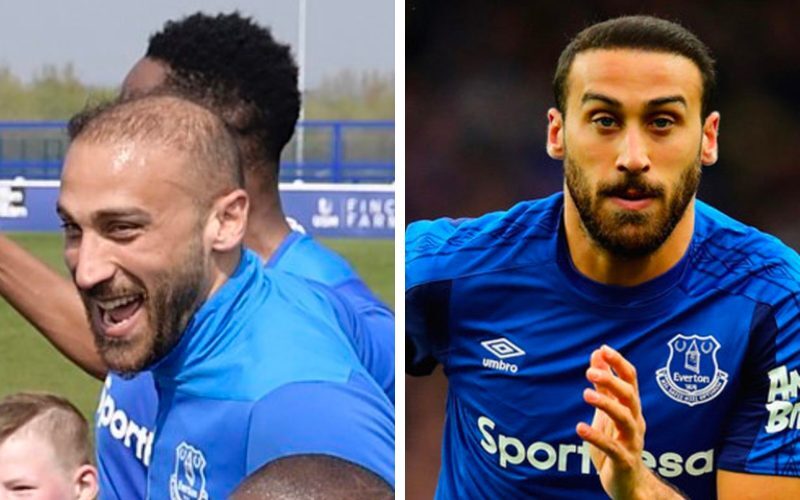
6. Andy Carroll – Newcastle to Liverpool (£35m, 2011)
When Liverpool sold Fernando Torres to Chelsea for £50 million in January 2011, they immediately reinvested £35 million of that fee in Andy Carroll—a British record for a homegrown player at the time. Carroll had been in fine form for Newcastle, scoring 11 league goals in the first half of the 2010/11 season, and Liverpool believed they were signing the next great English centre-forward.
However, Carroll’s time at Anfield was a disaster. Plagued by injuries, he struggled for fitness and form, managing just six league goals in 44 appearances across two seasons. His style of play didn’t suit Liverpool’s system, and he never looked comfortable leading the line for a club of that stature. Carroll was eventually sold to West Ham at a significant loss, and his time at Liverpool remains one of the most expensive January flops in history. The only positive was that their cheaper striker signing of the two Torres replacements did alright. Didn’t he?
5. Guido Carrillo – Monaco to Southampton (£19.1m, 2018)
Southampton have had their fair share of transfer hits and misses, but Guido Carrillo stands out as one of the biggest flops. Signed for a then club-record fee of £19.1 million from Monaco in January 2018, the Argentine striker was expected to boost a struggling Saints attack. He had worked under manager Mauricio Pellegrino at Estudiantes, so there was hope that familiarity would help him settle quickly.
“I still have a year left in England, but I prefer not to think about it now.”
Instead, Carrillo struggled from the start. He failed to score in 10 league appearances, often looking isolated and ineffective. Pellegrino was sacked soon after, and Carrillo was frozen out under new management. By the end of the season, Southampton narrowly avoided relegation, but Carrillo’s contribution was minimal. He was loaned out twice before leaving on a free transfer, making this one of the worst deals in the club’s history.
4. Savio Nsereko – Brescia to West Ham (£9m, 2009)
Savio Nsereko’s January 2009 move to West Ham raised more than a few eyebrows. The Hammers spent £9 million—then a significant sum—on the young German winger, who had shown flashes of potential in Serie B but was far from proven at the top level. It quickly became clear that West Ham had made a costly mistake.
“I’m going to investigate the Nsereko deal that the previous board had overseen, citing the huge financial loss West Ham incurred by selling the player for so cheap just six months into his contract.”
Karen Brady, Benni McCarthy’s best mate and West Ham vice-chairman, announced in 2012.
Nsereko struggled to adapt to the Premier League’s intensity and looked lightweight against stronger defenders. He made just one league start and was offloaded to Fiorentina after less than a year. The deal was such a financial disaster that West Ham launched an internal review of their transfer policy. Nsereko’s time in England is now remembered as one of the most infamous flops in the club’s history.
3. Alexis Sánchez – Arsenal to Manchester United (Swap deal, 2018)
When Manchester United signed Alexis Sánchez in a high-profile swap deal with Arsenal, fans were ecstatic. Sánchez had been one of the Premier League’s best players during his time in North London, and United were hoping he could provide the spark they needed to return to title contention. The Chilean’s arrival was accompanied by enormous fanfare, including a widely mocked piano-playing unveiling video. While it was hoped he would be the orchestrator of Man United’s attack, the only thing that was orchestrated was the destruction of their wage structure.
“After the first training session I had, I realized a lot of things. After the session I got home and I told my family and my agent ‘can you not rip up the contract to go back to Arsenal?'”
What followed was one of the most infamous flops in Premier League history. Sánchez looked a shadow of the player he had been at Arsenal, struggling with form, confidence, and fitness. In 32 league appearances for United, he scored just three goals. Worse still, his astronomical wages disrupted United’s salary structure and morale within the squad. By 2019, United had seen enough and sent Sánchez on loan to Inter Milan, where he later moved permanently. The swap deal, which cost United millions in wages, became a prime example of how not to do business in January.
2. Fernando Torres – Liverpool to Chelsea (£50m, 2011)
Few January transfers have garnered as much attention as Fernando Torres’ £50 million move from Liverpool to Chelsea in January 2011. At the time, it was a British transfer record, and Chelsea fans were ecstatic at the prospect of pairing Torres with Didier Drogba. After all, the Spaniard had been one of the most prolific strikers in the league during his time at Anfield, netting 81 goals in 142 games.
However, injuries and a crisis of confidence meant that Torres was never the same player at Stamford Bridge. His goal-scoring touch deserted him, and while he did score a few key goals—most famously in the Champions League semi-final against Barcelona—his league form was dire. Over four seasons, Torres managed just 20 goals in 110 league appearances. For a £50 million outlay, it was a monumental disappointment, and his struggles became a running joke among rival fans.
1. Mykhailo Mudryk – Shakhtar Donetsk to Chelsea (£88.5m, 2023)
Chelsea’s January 2023 signing of Mykhailo Mudryk for a staggering £88.5 million was one of the most talked-about deals in recent memory. The highly-rated Ukrainian winger had been closely linked with Arsenal, but Chelsea swooped in at the last moment to secure his signature. Expectations were sky-high, especially given the massive fee and the media attention surrounding his transfer.
“We all believe that [he is innocent]. No, I don’t think so [that his Chelsea career is over]. I think he will come back, we don’t know when – that is the only doubt we have in this moment but for sure, he will come back.”
Unfortunately, Mudryk’s early months at Stamford Bridge were a disaster. He struggled to adapt to the pace of the Premier League and looked out of sync with his teammates. Despite flashes of potential, he failed to contribute any goals or assists in his first dozen appearances. Chelsea’s chaotic season, combined with Mudryk’s hefty price tag, made this deal look like a panic buy. After failing a drugs test, given the length of the deal, he isn’t only the worst January transfer of all time, but the worst Premier League transfer of all time.


